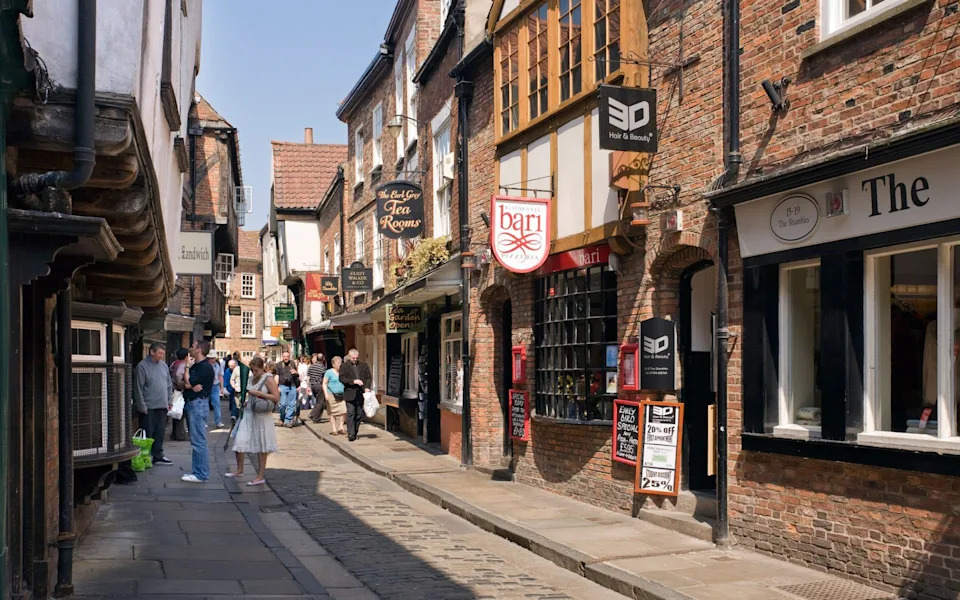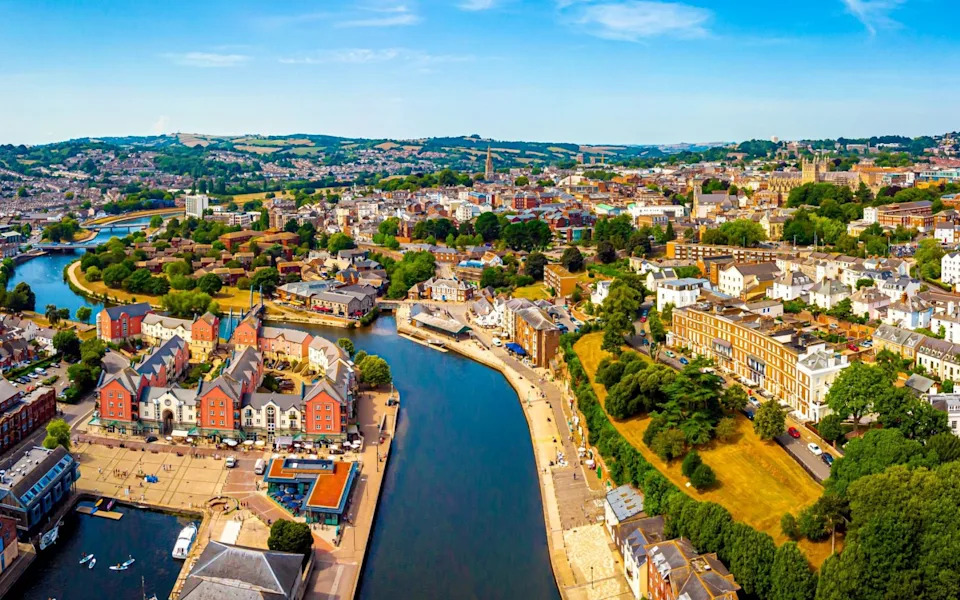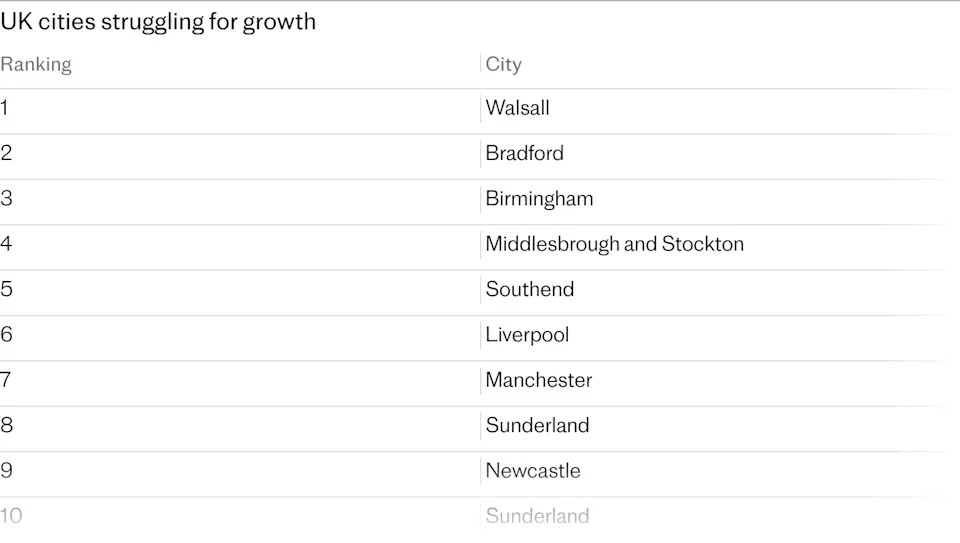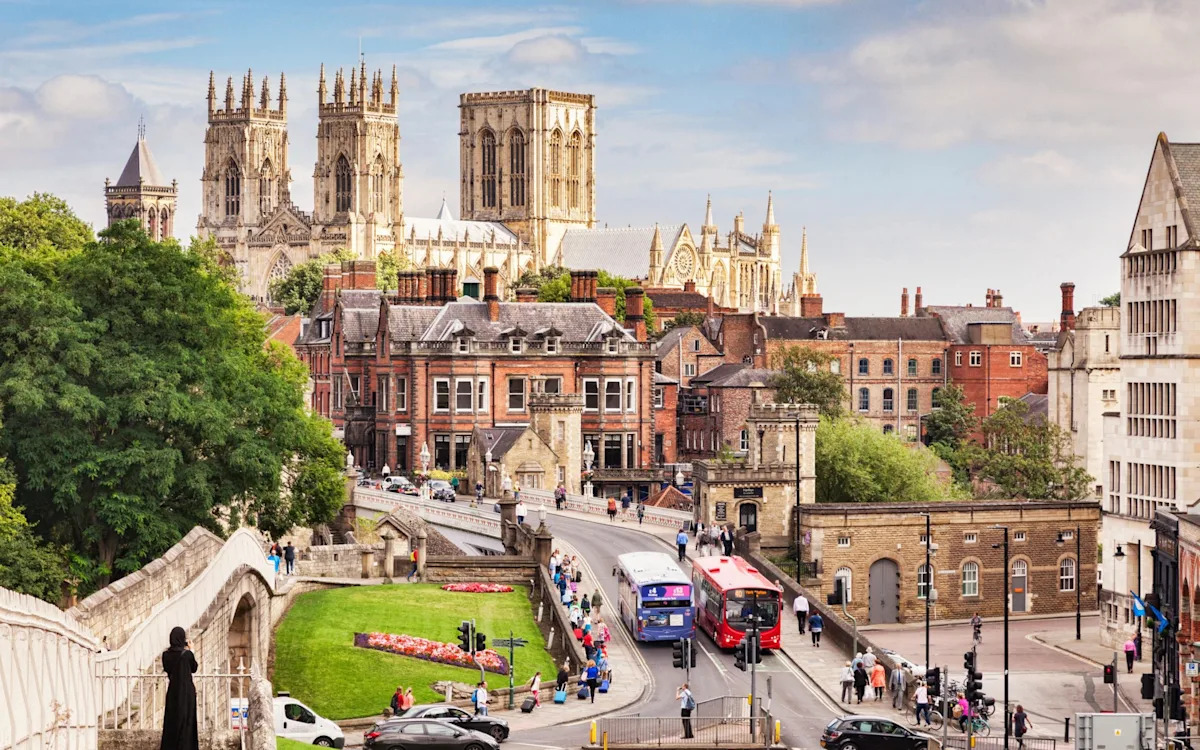Once the Roman capital of Britain, York has a new claim as the country’s most prosperous city – offering its citizens a great quality of life and good job options.
It has come top in a report into Britain’s cities’ growth prospects, scoring highly for jobs – it has an unemployment rate of 1.6pc that compares with an average across the index of 3.8pc. York’s adult and youth skills provision and take-up, good transport links, quality housing and bustling shopping streets also contributed to it coming out on top.
The study, by Demos and PwC, ranks Britain’s 50 biggest towns and cities – excluding London – by these metrics and others. These include crime rates, house prices, earnings, healthcare facilities, quality of life and schooling, using local government data and a poll of residents on their priorities.
“Good growth”, according to PwC, means a strong and growing local economy, with investment in housing, services, facilities and the public realm. In short, these are nice places to live.
York rose up the rankings this year by six places and has been the most improved location in the top 10 since 2021.
This small city punches above its weight, especially when it comes to tourism. “York is the city with the biggest visitor economy relative to its size and it’s the only place where total visitor spending in the city centre is higher than the total residential spending,” says Andrew Carter, of the Centre for Cities.
He adds: “Places like York where visitors make an outsized contribution to local economies are in the minority among the UK’s towns and cities.”
York has other big businesses too. The FTSE 100 insurance company Hiscox is headquartered here, and Nestle owns the original Rowntree factory, which still produces KitKats, Aeros and Yorkies.
The university is a major employer, as is the racecourse, and this summer Rachel Reeves, the Chancellor, announced that a government hub, home to 2,000 civil servants, would be built within the York Central development.

York has the biggest visitor economy relative to its size – Angela Serena Gilmour / Alamy Stock Photo
Plus, York already has a healthy mix of residents, at different ages and life stages, says Ed Stoyle of Savills.
“We see older couples returning from the villages and young families settling here for schooling. These two groups collide in York along with students. People commute to London, Leeds and Manchester.”
Edinburgh and Bristol came second and third in the study, followed by Exeter and Swindon. Completing the top 10 are Plymouth, Southampton, Reading, Portsmouth and Norwich. London was left out of the study as it compares more easily with other leading world cities rather than British regional cities, the author Paddy Schmidt explains.
The best performing cities for growth this year are, mostly, the smaller, rural cities where quality of life scored highly, says Schmidt. “They tend to reflect the public priority of a good work-life balance, income distribution and safety, with a high number of shops open per person.”

Exeter came fourth in the ranking of best performing UK cities for growth – iStockphoto
‘Overspill effect’
Emily Williams of Savills believes the top 10 reflects what she describes as an “overspill effect” – smaller cities and their surrounding areas which present better value for money and offer access to major employment hubs.
For example, Swindon – which ranked fifth, and is actually a town – is becoming a more obvious choice for homebuyers wanting to work in Oxford (under an hour by car), or London (the fast train takes less than 50 minutes direct) – but without the house price tag.
The demand is clear. It takes 47 days to sell a house here versus a 63-day average, according to Rightmove. The average house price in Swindon is £258,729, just under half as much as Oxford. The most popular locations for buyers are the characterful Old Town and the village of Wroughton on the south side of the city.
The bottom 10 is dominated by vast urban centres, with large jobs markets and top-rated universities. Birmingham, Manchester, Newcastle all feature, while Liverpool has slipped 11 places this year – mostly due to rising unemployment. The metric of crime incidents per person pulls the other large cities down too.
“Big cities underperform,” says Carter. Large cities such as Newcastle and Birmingham sit at the bottom of productivity rankings of G7 cities, he adds. Compared to cities such as Munich, the population of the UK’s regional cities are smaller and there are fewer high-skilled and highly paid “knowledge jobs” and poor transport links for commuters. This all conspires to suppress productivity levels.
b’

‘
It also impacts the surrounding areas. “The poor performance of big cities minimises the economic opportunities available for smaller places nearby too. That means lower wages and lower living standards, and goes some way to explaining the economic inequality between the greater South East and the Midlands and north of England,” he says. Eight of the top 10 are in the south of the country and eight of the bottom 10 are in the North or Midlands.
The historic naval cities of Portsmouth and Plymouth both appear in the top 10, sixth and ninth respectively, despite having some of the most impoverished wards in the country. Fratton West in Portsmouth, for example, had one in four people living on housing benefit last year.
But there is seemingly a revival under way of these old shipbuilding ports, where industry was once fading. Plymouth’s economy has been delivered a £250m boost, named as one of five areas to receive funding in line with Labour’s new defence industrial strategy.

Plymouth is one of five areas to receive funding through Labour’s new defence industrial strategy – Thomas Faull/E+
The economy here is reliant on the ever-expanding defence and aerospace company Babcock. The company, which bagged a £114m deal for defuelling nuclear submarines in June, contributes £1bn to the economy across the South West, supports 19,000 jobs and runs multiple skills and schools programmes.
Other sectors are emerging in Portsmouth. “Public administration and defence make up the largest share of any sector of the local economy, but it has seen strong growth in both information and communication sectors and arts and entertainment of more than 25pc – suggesting an increasingly diversifying local economy,” says Williams.
Again, the port city has direct trains into London and Southampton yet offers cheaper housing in family-friendly areas such as Southsea right on the seafront.
The report’s top 10 would certainly indicate that “good growth” and prosperity come down to housing costs and a favourable ratio between local employment opportunity and earnings, or easy commutability and house prices.
Oxford and Cambridge have slipped in the ranking this year as property values continue to soar, constrained by the restrictive surrounding green belt.
The omission of London from the ranking could also be down to its escalating housing affordability crisis. High housing costs can undermine growth in a city, posing a risk to the attraction or retention of talent and key workers and families – with a knock-on effect to the wider UK economy.
“The unaffordability of housing is a national problem, not just a challenge for the place themselves.
“Too few people can find homes located close to good jobs and this means cities are unable to play the role they should in the national economy as drivers of productivity,” says Carter.
